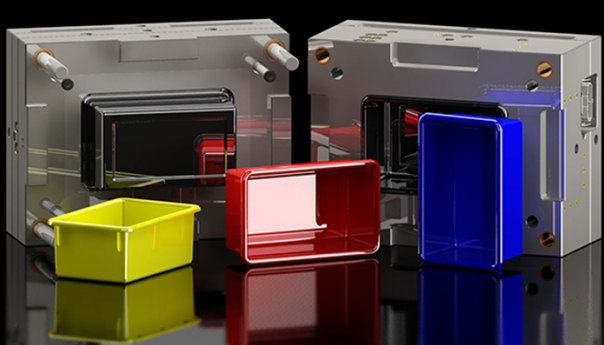Creating Massive Plastic Molds for Industrial Applications
In the world of industrial manufacturing, plastic molds play a vital role. These molds are used to create a wide range of products, from automotive parts to consumer goods. However, when it comes to creating massive plastic molds for industrial applications, the complexity and challenges multiply. In this article, we will explore the process and considerations involved in creating these large-scale molds.
Designing the Mold:
The first step in creating a massive plastic mold is to design it. This involves careful consideration of the dimensions, shape, and material of the final product. Computer-aided design (CAD) software is commonly used in this process, allowing designers to create a virtual representation of the mold. The design must take into account factors such as the desired production volume, the type of plastic being used, and any additional features or inserts required.
Choosing the Material:
The material used for massive plastic molds is typically selected based on its durability, thermal properties, and compatibility with the plastic being molded. Common materials include steel and aluminum alloys. Steel is preferred for its high strength and heat resistance, while aluminum alloys provide faster heat transfer and easier machining. The material selection depends on factors such as the expected production volume, the complexity of the mold, and the budget constraints.
Manufacturing the Mold:
Once the design is finalized and the material is chosen, the manufacturing process begins. Massive plastic molds are usually created using CNC (Computer Numerical Control) machining. This automated process uses computer-controlled machines to remove material from a solid block, gradually shaping it into the desired mold. CNC machining offers high precision and repeatability, making it ideal for complex molds with intricate details.
Heat Treatment and Surface Finish:
After the initial machining process, the mold undergoes heat treatment to improve its hardness and durability. This involves heating the mold to a specific temperature and then cooling it rapidly, a process known as quenching. The heat treatment helps to optimize the mold\’s resistance to wear and prolong its lifespan. Following heat treatment, the mold may also receive a surface finish to eliminate any roughness and improve the quality of the molded products.
Testing and Validation:
Creating a massive plastic mold is not a one-time process; it requires multiple iterations of testing and validation. The initial mold is tested using a small-scale prototype to ensure that it produces the intended product accurately and consistently. Any necessary adjustments or modifications are made based on these test results. Once the mold meets the required specifications, it can be used for mass production.
Maintenance and Repair:
Massive plastic molds, like any other tool, require regular maintenance and occasional repairs. Over time, molds can wear out due to frequent use and exposure to high temperatures. Regular cleaning, lubrication, and inspection are essential to prevent production issues and extend the mold\’s lifespan. In the case of damage or malfunction, repairs may be required, which often involve re-machining or replacing certain components.
Conclusion:
Creating massive plastic molds for industrial applications is a complex and meticulous process. It involves careful design, material selection, manufacturing, testing, and maintenance. However, when done correctly, these molds can greatly contribute to the production efficiency and quality of various industrial products. With advancements in technology and manufacturing techniques, the creation of massive plastic molds continues to evolve, enabling industries to meet the demands of an ever-changing market.
Anterior:Producing High-Quality Large Plastic Molds: A Guide to Success
Próximo: Manufacturing Large Molding Parts: A Guide to Producing High-Quality Components
-
Injection Mold Design Engineering: Optimizing the Manufacturing Process
2023-6-3
Injection molding is a manufacturing process that involves melting plastic pellets and injecting them into a mold to for...
Ver detalles -
molde purificador de agua de inyección de alta calidad
2023-4-8
Injection molding is a manufacturing process used to produce plastic products. The process involves melting plastic pell...
Ver detalles -
Creating High-Quality Automotive Molds for Optimal Performance
2023-4-15
Creating high-quality automotive molds is an essential aspect of the manufacturing process for the automotive industry. ...
Ver detalles -
Creating a Plastic Middle Chair Mould: A Revolutionary Innovation
2023-7-5
Innovation has always been the driving force behind the growth and development of various industries. In recent years, t...
Ver detalles -
Revving Up Production with Automotive Mold Innovation
2023-6-8
The automotive industry has been at the forefront of technological innovation for decades, and the use of molds is no ex...
Ver detalles -
How are precision moulds made?
2024-12-3
In the vast field of manufacturing, precision moulds play a vital role. Not only are they key tools in the production of...
Ver detalles








